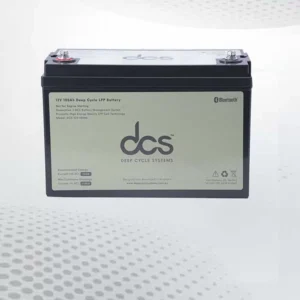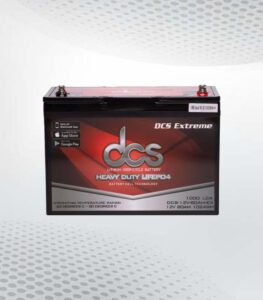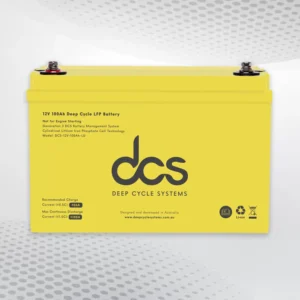The Nissan Navara D40 is a reliable and rugged vehicle known for its durability and performance. However, like any vehicle, it can experience mechanical issues over time, including problems with the window regulator. The Nissan Navara D40 window regulator is a crucial component that ensures the smooth operation of your windows. When it malfunctions, it can be a source of frustration and inconvenience. This blog post explore the window regulator mechanism, common failure symptoms, diagnostic tips, replacement procedures, and preventive maintenance strategies to keep your Nissan Navara D40 running smoothly.
Understanding the Window Regulator Mechanism
The window regulator mechanism is a crucial component in a vehicle’s window system, allowing the window to move up and down smoothly. There are primarily two types of window regulators: manual and power. A hand crank operates manual regulators, while power regulators utilize an electric motor to automate the process. Both types are designed to facilitate the movement of the window glass within its frame, ensuring proper sealing and functionality.
The regulator typically consists of several vital parts in power window systems, including the motor, gear assembly, and cables or tracks. When the window switch is activated, the electric motor engages, turning the gears that either pull the wires or move a track to raise or lower the window. This system is engineered for efficiency and reliability, with safety features that prevent the window from closing too forcefully, potentially causing injury.
Over time, window regulators can experience wear and tear. Common issues include malfunctioning motors, frayed cables, or misaligned tracks, leading to slow or erratic window movement. Regular maintenance is essential to extend the lifespan of these components. For instance, lubricating the tracks can reduce friction, while inspecting the cables for signs of fraying can help prevent sudden failures.
Understanding the window regulator mechanism not only aids in diagnosing problems but also empowers vehicle owners to perform basic maintenance. If a window fails to operate properly, troubleshooting the regulator could save time and repair costs. By being proactive and attentive to the signs of wear, such as unusual noises or sluggish movement, drivers can ensure that their vehicle’s windows function smoothly and safely for years to come.
Common Symptoms of a Faulty Window Regulator
A faulty window regulator can be frustrating for vehicle owners, often leading to inconvenience and potential safety hazards. Recognizing the common symptoms early can save time and money on repairs.
One of the most noticeable signs of a failing window regulator is difficulty operating the window. If the window moves slowly, gets stuck, or fails to respond to the window switch, it may indicate that the regulator is malfunctioning. Sometimes, the window may only work intermittently, which can be particularly bothersome if you need to open or close it quickly.
Another symptom is unusual noises from the door when attempting to operate the window. Grinding, clicking, or popping sounds can suggest that the regulator’s components are damaged or misaligned. These noises may result from wear and tear on the gears or cables within the regulator mechanism, signalling that a replacement may be necessary.
Additionally, you may notice that the window does not seal properly when closed. If there are gaps or drafts around the edges of the window, it can be a sign that the regulator is not holding the window in its proper position. This affects the comfort of the cabin and can lead to water leaks and increased road noise.
Sometimes, the window might completely fall into the door, indicating a severe regulator failure. If this happens, it’s crucial to address the issue immediately, as it can compromise the security of your vehicle.
Overall, being vigilant about these symptoms can help you detect a faulty window regulator early on, allowing for timely repairs and ensuring the smooth operation of your vehicle’s windows.
How Does the Nissan Navara Power Window Motor Work?
The Nissan Navara, like many modern vehicles, is equipped with power windows that enhance convenience and ease of use. The power window system operates through a motor mechanism, which plays a crucial role in controlling the movement of the windows. Understanding how the power window motor works can provide valuable insights into its function and maintenance.
At the core of the power window system is the Nissan Navara Power Window Motor, typically located within the door panel. When the driver or passenger presses the window switch, an electrical signal is sent to the motor, initiating its operation. The motor consists of an electric motor, a gear mechanism, and a drive cable or arm. The electric motor converts electrical energy into mechanical energy, causing the gears to rotate.
This rotation drives the cable or arm connected to the window regulator, which is the component responsible for the up-and-down movement of the window. The motor rotates in one direction depending on whether the switch is pressed to raise or lower the window. The window regulator, usually a scissor or cable-type mechanism, allows for smooth and controlled movement of the window glass.
Over time, wear and tear can affect the efficiency of the power window motor. Common issues include an engine that runs slowly, makes unusual noises, or fails to operate. Regular maintenance, such as keeping the window tracks clean and ensuring the electrical connections are secure, can help extend the life of the power window motor. If problems arise, diagnosing the issue often involves checking the window switch, fuses, and wiring before replacing the engine itself.
Diagnosing Window Regulator Issues
Window regulators are essential components of your vehicle’s power window system, allowing the window to move up and down smoothly. When issues arise, it can lead to frustrating situations. Here’s how to diagnose common window regulator problems effectively.
Signs of a Faulty Window Regulator
Unresponsive Window:
If your window doesn’t move when you press the switch, it may indicate a malfunctioning regulator. Check if other windows work to rule out a power supply issue.
Strange Noises:
Listen for grinding, rattling, or popping sounds when operating the window. These noises often signal that the regulator’s gears are worn out or misaligned.
Slow Movement:
If the window moves sluggishly, the regulator may struggle due to dirt, debris, or damage. A clean and lubricated mechanism is crucial for smooth operation.
Visual Inspection
Remove the door panel to access the window regulator. Inspect for broken cables, bent tracks, or damaged components. Look for any visible signs of wear, such as frayed cables or misaligned tracks.
Electrical Check
Test the window switch and wiring for continuity. Use a multimeter to check for power at the window motor. The issue might be with the switch or a blown fuse if there’s no power.
Replacing the Window Regulator
Replacing a window regulator can seem daunting, but with the right tools and patience, you can tackle this task yourself. The window regulator is the mechanism that raises and lowers your vehicle’s window, and if it fails, you’ll be unable to operate your windows properly. Here’s a step-by-step guide to help you through the process.
Tools and Materials Needed
Before you start, gather the necessary tools: a flathead screwdriver, a Phillips screwdriver, a socket wrench set, and a replacement window regulator specific to your vehicle model. You may also need safety glasses and gloves to protect yourself.
Step 1: Remove the Door Panel
Begin by disconnecting the negative battery terminal to ensure safety. Next, remove any screws or clips securing the door panel. Carefully pry the door panel away from the door frame using a flathead screwdriver, not damaging the clips or the panel itself. Once detached, lift the panel upward to remove it completely, exposing the inner workings of the door.
Step 2: Disconnect the Old Regulator
Locate the window regulator and its motor. Disconnect the wiring harness from the engine, and remove any bolts securing the regulator to the door frame. You may need to lower the window slightly to access all the screws. Gently lift the window to remove it from the regulator if it hasn’t already fallen.
Step 3: Install the New Regulator
Position the new regulator in place and secure it with bolts. Reconnect the wiring harness to the motor, ensuring a snug fit. Carefully guide the window back onto the new regulator, providing it fits securely.
Step 4: Reassemble the Door Panel
Once everything is securely in place, reattach the door panel by reversing the removal steps. Make sure all clips and screws are properly secured. Finally, reconnect the battery terminal and test the window to ensure proper operation.
By following these steps, you can successfully replace your window regulator and restore functionality to your vehicle’s windows. Regular maintenance can prevent future issues, ensuring a smoother driving experience.
Preventive Maintenance Tips for the Nissan Navara D40 Power Window Motor
Maintaining the power window motor in your Nissan Navara D40 is essential for ensuring the smooth operation of your windows. Regular preventive maintenance can help you avoid unexpected failures and extend the lifespan of the window motor. Here are some tips to keep your power window system in excellent condition.
Regular Inspection
Begin by regularly inspecting the window operation. Listen for unusual sounds when raising or lowering the windows. Grinding, clicking, or excessive noise can indicate wear or misalignment. Additionally, check for any signs of slowing down or failure to respond promptly, as these could signal that the motor is starting to wear out.
Lubricate Window Tracks
The window tracks can accumulate dirt and debris over time, increasing friction and strain on the motor. Clean the tracks with a soft cloth and a mild cleaning solution. Afterwards, a silicone-based lubricant will be applied to ensure smooth operation. Avoid grease or oil, which can attract dirt and worsen the problem.
Check Electrical Connections
Inspect the electrical connections to the Nissan Navara D40 power window motor. Loose or corroded connections can cause intermittent power supply issues, leading to motor failure. Ensure that the connectors are tight and free from corrosion. If necessary, clean the connections with a contact cleaner.
Keep the Window Seals in Good Condition
Damaged or worn window seals can allow moisture and dirt into the assembly, potentially causing electrical issues. Regularly inspect the seals and replace them if you notice any cracks or wear. Keeping seals intact helps prevent water ingress, which can damage the power window motor.
Regular Use
Lastly, regularly using the power windows helps keep the motor in good working condition. If the windows are seldom used, components may seize or develop issues due to inactivity. Make a habit of exercising the windows periodically to maintain their function.
Conclusion
Maintaining the Nissan Navara D40 window regulator is essential for ensuring hassle-free window operation and preserving your vehicle’s overall comfort. Timely identification of symptoms like slow-moving windows, unusual noises, or inconsistent window movement can save you from more extensive repairs. When issues do arise, diagnosing them accurately by inspecting electrical connections and mechanical components can pinpoint the problem area. Replacing a faulty regulator might seem challenging, but with the right tools and systematic steps, it’s manageable even for DIY enthusiasts.
FAQS
1. How do I know if my window regulator needs replacing?
– Signs include slow window movement, unusual noises, or windows getting stuck or falling into the door.
2. Can I replace the Nissan Navara D40 window regulator myself?
– Yes, replacing the Nissan Navara D40 window regulator with the right tools and guidance can be a DIY project.
3. What tools do I need to replace the window regulator?
– Common tools include screwdrivers, a socket set, and a trim removal tool.
4. How often should I perform maintenance on the window regulator?
– Regularly check and clean window tracks and lubricate moving parts periodically to ensure smooth operation.
5. Why is my window moving slowly?
– Slow window movement can be due to debris in the tracks, worn-out components, or electrical issues.
6. What type of lubricant should I use on the window regulator?
– Use a silicone-based spray for lubricating moving parts.




